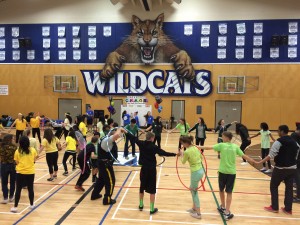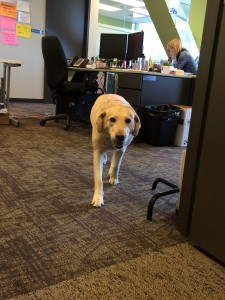- What did you learn or discover about your strengths as a teacher from the programs and teaching you did at your CFE site? (i.e., what are your strengths!)
In general, I found this CFE experience was hard to connect to my teaching experience because it was quite office based, though it was still valuable experience. It did help reinforce the idea of inclusion in the classroom and in discussion. Typically during our UBC courses we discuss the inclusion of race, sex, gender, and socioeconomic status in the classroom, but rarely do we discuss physical disability inclusion. Another strength I discovered during this CFE experience was an interest in passion in special education for physical and learning disabilities. I was familiar with my interest in special education prior, which is why I wanted to explore RHSF, but this experience has confirmed special education as my teaching niche.
2. From your experiences, what did you learn about teaching and/or how children/students learn (anything new to add to your previous ‘reflections’?)?
I’ve learned that education may not be accessible for every student. Not every school is built to accommodate students with various physical disabilities. There may be unnecessary physical barriers a student with a disability may need to overcome each day just to be able to learn the same way other students do. Not only are there physical barriers, but also stigmas and stereotypes can alter the way students with disabilities are perceived. By having more inclusive conversations in the classroom, any negative or unclear ideas surrounding disabilities can be broken down.
From different school visits we went on, I’ve also learned the importance of team-building and social-emotional learning between different grades and schools. Watching the Difference Maker Program and an Organized Chaos Day at Lord Byng Elementary and McMath High School in Richmond. Sometimes these styles of learning can seem like silly camp games, but the energy the students generate between each other when completing these types of projects cannot be replicated in a traditional classroom setting.
3. What did you do and accomplish by the end of your work on any special project?
By the end of my work at the Rick Hansen School Program I was able to create 4 project-based challenges for the Abilities in Motion secondary program (and possibly more as there are two days left). The purpose of these challenges is to have students eliminate barriers in the world (their school, home, workplace, community areas) to create accessibility for everyone. Cedric and I worked together to brainstorm ideas that can be used in a wide range of classes in the school, as one challenge can be used for multiple courses. After a day of brainstorming, we were able to create 8-10 full-length challenges for the AIM Secondary program. Another project was to evaluate already-made programs taking place at different schools in the community.
4. What have you learned from doing this curriculum project that you think will be useful in your future teaching?
From connecting projects and challenges to curricula across Canada, I’ve learned about learning outcomes throughout the country. I think this will be useful for my future teaching, as it has opened my eyes to resources, materials, and teaching strategies outside the province I am teaching in. I’ve also created a set of projects that can be used in different classes. These challenges, along with other RHSP resources, will be tools I will use in my future classroom to foster mindful and inclusive environments in the classroom, while also working on problem-solving skills for students. I have also become familiar with courses outside of my two teachable subjects, so I will always have a backup lesson ready for an unexpected TOC day.
5. What did you see as the connections between your time at the CFE and your time in our UBC methods courses?
There is a strong connection with social justice. Being fair in the classroom and the school environment has been a large topic at UBC, and the goal of the RHSP is to create more inclusive classrooms when it comes to disabilities. Many of their lessons, however, also promote inclusion of any kind.
6. Would you recommend this experience be continued or expanded for future teacher candidates? Please explain why or why not?
I think the experience is definitely valuable for teacher candidates, but it would be more successful if candidates weren’t limited to one type of experience. It’s a nice transition between the hectic practicum and starting lecture. It would be fascinating if teacher candidates could do a two-week CFE every second or third month when we are doing lecture. While I loved my experience at RHSF, I would have loved to also do something hands on, something outdoors, something at a museum. If the purpose of the CFE is to show TCs where a Bachelor of Education can also take you, the purpose is a little spoiled if you only get to experience one other alternative.








